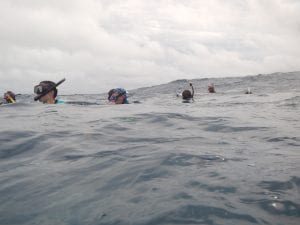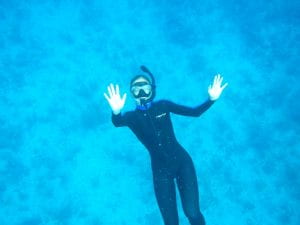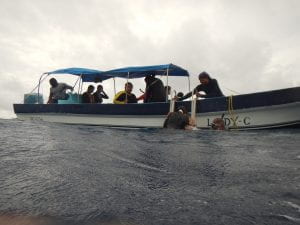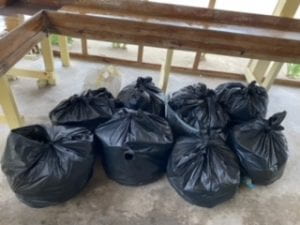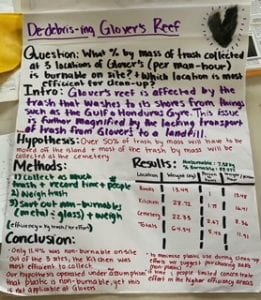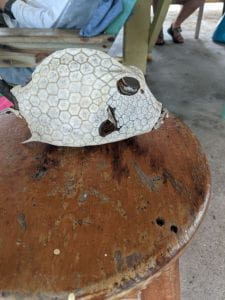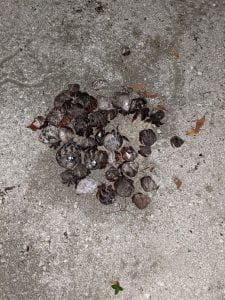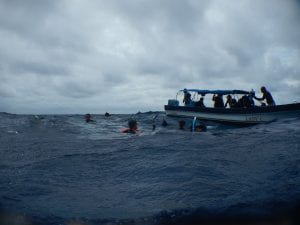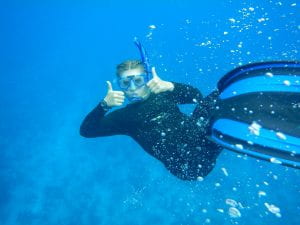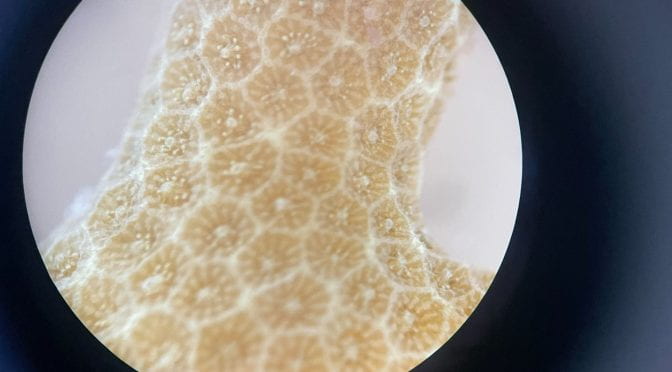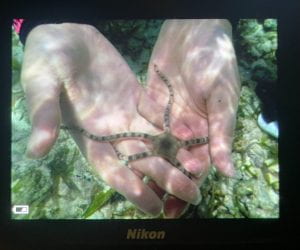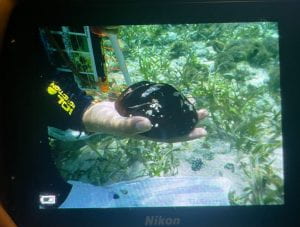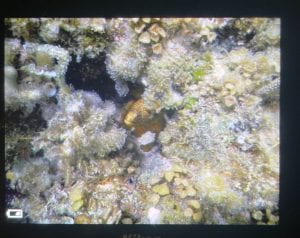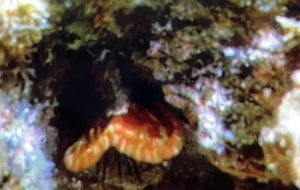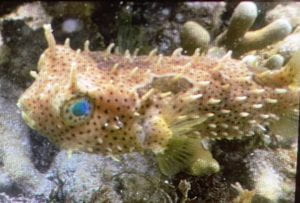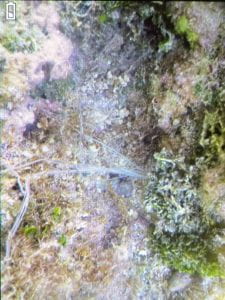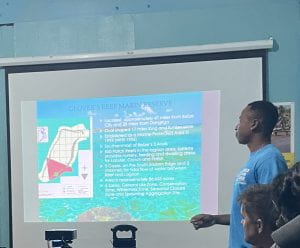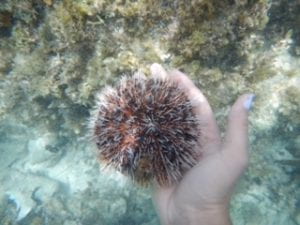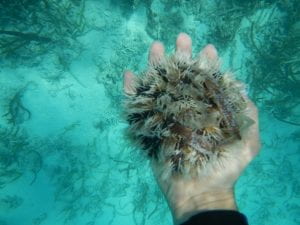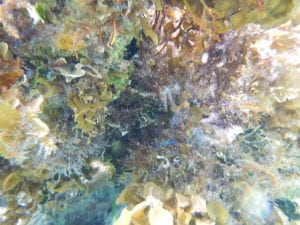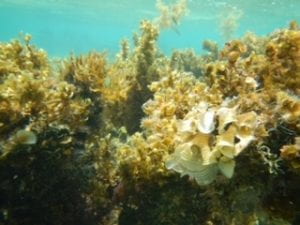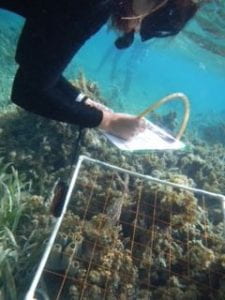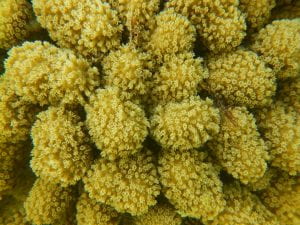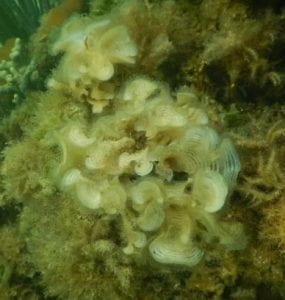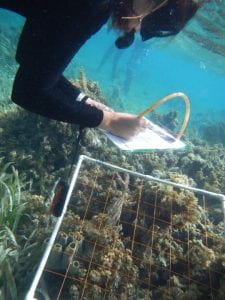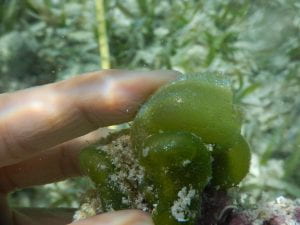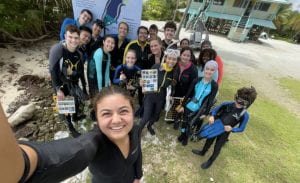Reef day #5 was definitely the most packed (and exhausting) day yet! There was a storm last night, so there was leftover cloudiness and winds this morning. However, conditions still looked good enough to go out onto the fore reef! I took dramamine at breakfast, and thank goodness I did. We hopped on the boat, and as soon as we exited the lagoon through a channel, we could feel the intensity of the waves. Even in the water, we were being forcefully sloshed around. Looking up, people were at all different heights among the waves.
Even with the rough conditions, I had a great time on the reef slope! The depth was incredible, especially at the drop off. I saw so many schools of fish, and I could clearly see the spur and groove structure of the corals down below! We also took a video of all of us diving down and making owl hands. Hopefully we make Rice’s Instagram 🙂
I felt a little sick coming off the boat, but the dramamine helped to keep the nausea at bay.
Later in the day, we conducted a trash clean-up (as an experiment in true TFB fashion). We collected so much trash and sorted it into burnables and non-burnables. Our experiment hoped to characterize the trash at different sites along the shore of Middle Caye as well as the general efficiency of collection at each site. We spent the entire afternoon planning out our experiment, conducting our experiment, measuring and sorting to collect data, and then making a poster and presenting it. We are hopeful that this data will help to inform future trash clean-up efforts! I also managed to get a really cute, homecoming-style picture of TFBs lined up on the stairs to wash our hands.
I gave my first presentation today! I presented my reef taxa (anemones, corallimorphs, and zoanthids), and I feel like it went really well. Everyone asked really great questions too!
Before dinner, Nate (a fellow TFB) placed a shell in front of a hermit crab for giggles. Not only did we have some giggles, but we also witnessed something incredible: the hermit crab switch shells! I was able to get it on video and am thrilled to have seen something so rare to catch.
I didn’t have any taxa sightings today, but my other sightings and experiences were more than captivating! Ruth also taught us so much about Belize at dinner! Best off-the-cuff topic lecture ever!
The fact that my eye has been twitching since around 2:00 pm is a clear sign that I am more than ready to get some rest. I’m ready to sleep as soundly as I can to appreciate my last full day on the reef tomorrow!
– McKenna

